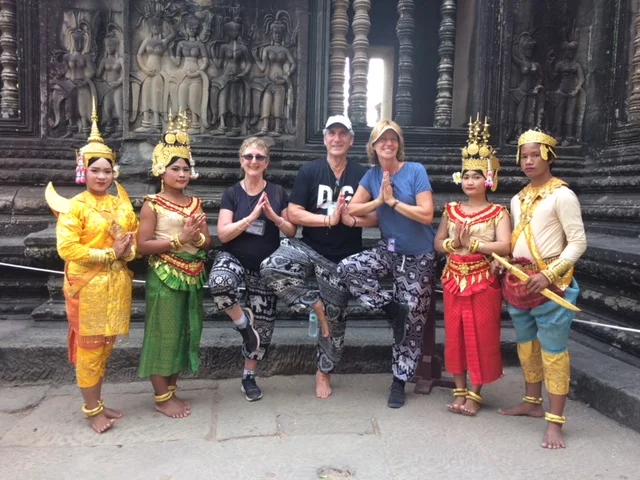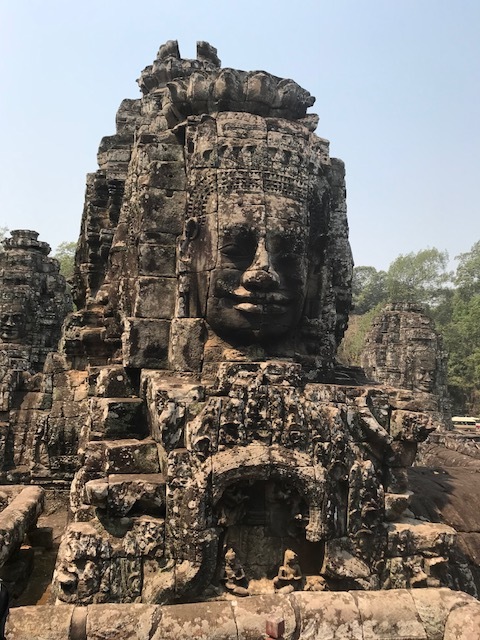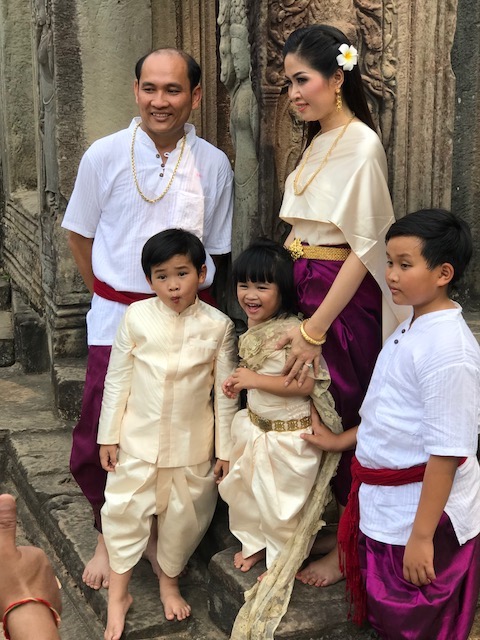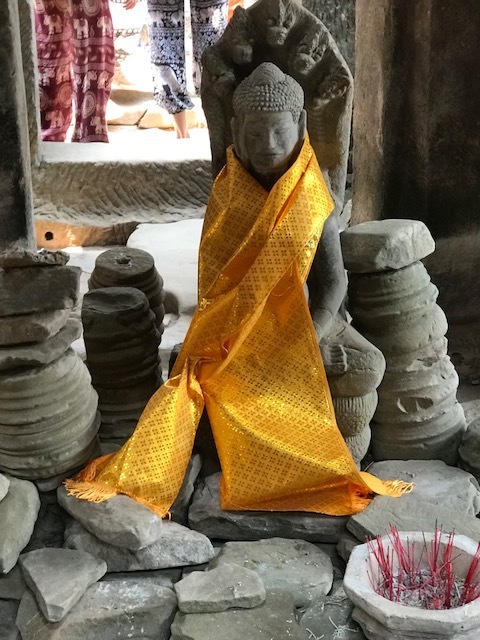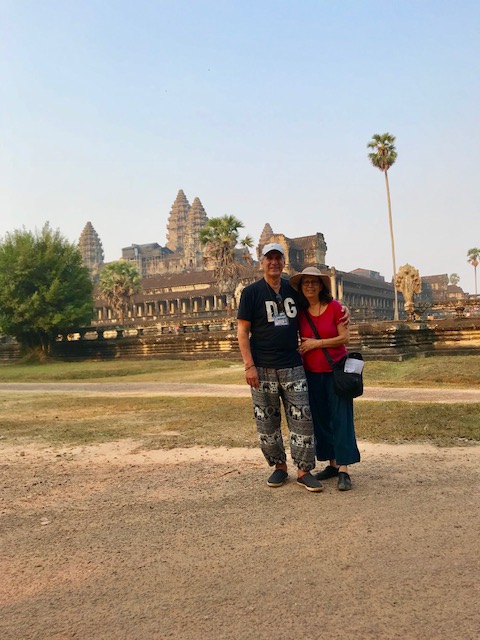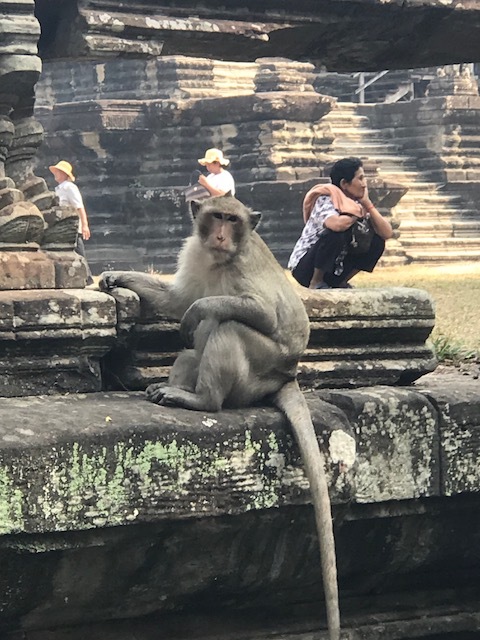A Pilgrimage to to Angkor Wat: One of the Seven Wonders of the World
The mystique of Angkor Wat in Siem Reap, Cambodia brings out the adventure in all of us. It was the site where "Tomb Raider" and "Indiana Jones Temple of Doom" were filmed. My son Jason and I first visited Angkor Wat in 2004. I was amazed how he climbed up and down the steep steps like a gazelle. I was more tentative and cautious and with the passage of time I am even more so now.
Our group ventured into Angkor Wat, an incredible 500 acre temple city complex. It is considered the largest religious monument in the world that was discovered by Portuguese missionaries around 1580. It was originally a Hindu Temple that was gradually transformed into a Buddhist temple at the end of the 12th century. It was declared a Unesco World Heritage Site in 1992 and is considered one of the Seven Wonders of the World. It has been named the top travel destination by Trip Advisor and Lonely Planet. It is an expression of Khmer architecture genius. The soaring awe inspiring temples and monuments were built between AD 800-1200. They are surrounded by a 570 foot wide moat that is filled with pink lotus flowers. It is the heart and soul of Cambodia and is a source of national pride. During its prime there were as many as 750,000 to one million people were living there.
Angkor Wat is famous for its 3000 beguiling heavenly dancing nymphs carved into its walls. In the afternoon we passed through the South Gate of Angkor Thom, the capital city of the ancient Khmer rulers. We concluded with a visit to Ta Prohm, which has been left the way it was found, covered with dense jungle of trees as first discovered by the French in the mid-1800s. Our group had fun taking photos of each other at various strategic points throughout the complex. I suggested some yoga poses that fellow travelers Debbie from D.C., and Ingrid from Laguna Beach, CA seemed to enjoy. One of the most common questions asked by tourists is what do the four mesmerizing faces on all sides of the towering Buddha Statue towers represent? During my meditation studies over the years I learned that they are symbolic of loving-kindness, empathetic joy, compassion and equanimity. Often referred to the four radiant or heavenly abodes or realms, they are the universal expression of an open heart and mind that are the meditative states, thoughts and actions to be cultivated in Buddhist mindfulness practice.
What added whimsy and joy to the day was getting permission to photograph the lovely couple seen here celebrating their wedding anniversary with their children who were more interested in the westerner in his elephant pants taking their photo rather than the photographer their parents hired. Then there were the monkeys making mischief and eating corn.
After walking many miles and climbing many steps to heights that can be challenging at times, we rested our bodies and quenched our thirst at the Angkor Cafe. I had enjoyed a cold fresh lime and mint shake and contemplated the magic of what I had once just experienced. It gave new meaning to the famous quote by architect Mies Van Der Rohe who said: “God is in the details.”



